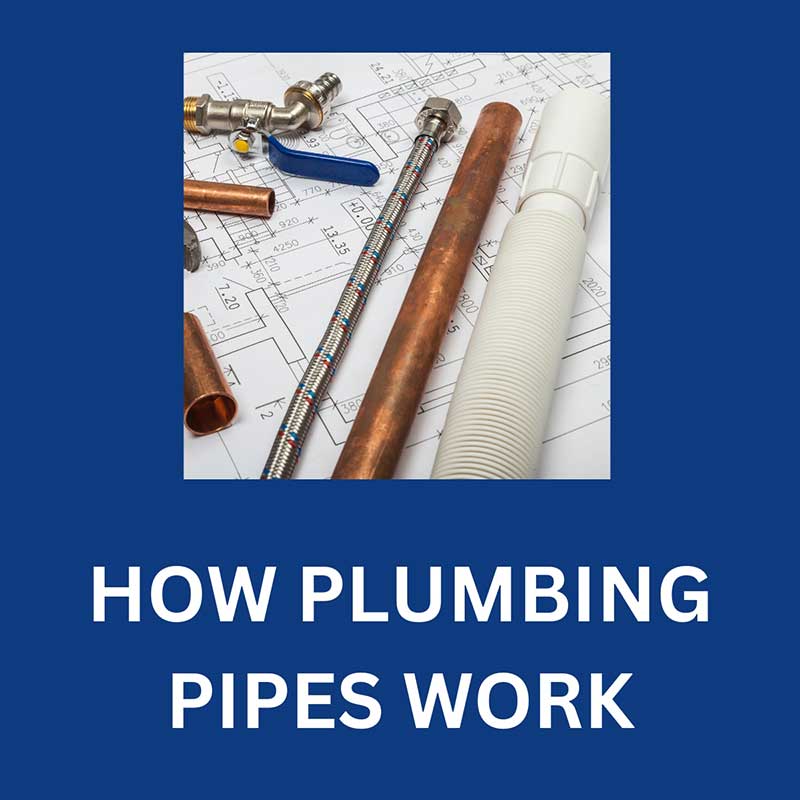
Household plumbing is a mystery; it’s as if by magic, you have water. Thanks to the plumbing pipes waters delivered and taken away when finished with. Most never give it a second thought you want to know how the plumbing pipes work (otherwise you wouldn’t be here), so we’re going to explain how it all works.
Every home, business/commercial premises, office anywhere with flowing water has two types of pipes the supply pipe and the waste pipe.
Supply Pipes
Supply pipes are nearly always copper. These pipes are connected to the mains water supply and run around your home. The pipes supply kitchen’s, bathrooms, cloakrooms, boilers, water cylinders and water tanks.
Your water supplier delivers the water into your home under pressure. Water companies use various methods to make this happen (i.e. water towers). The mains pressure is enough to push clean, treated water all-around your home. Some homes with poor water pressure may install a pump to assist with water pressure.
Waste Pipes
Waste pipes are usually plastic attached to the toilet, bath, basin, sinks and appliances that use water such as washing machines and dishwashers.
Waste pipes transport wastewater into the sewer. Waste pipes always travel downwards they don’t require any pressure and thus operate solely on the principle of gravity.
For waste pipes to work, they need air if none was present wastewater would get trapped in the pipes. Toilet use a soil pipe that points above your home, to gather air and so you don’t experience any foul smells coming from the pipe. Sinks and basins get their air through the plughole.
Traps
Every waste system utilises a trap. You would have noticed how toilets always have a bend which is always full of water and how there’s an S bend under every sink and basin in your home.
When water flows through these traps, there’s enough pressure there to push wastewater through the pipes. The trap traps water in the S bend which stays there until the next lot of wastewater is pushed through.
Water remaining in the S bend acts as a plug that stops any sewer gas coming into your home, which smells unpleasant and can be extremely unhealthy for you and your family. It’s for this reason that every drain must be trapped
Sink and basin traps are prone to blockages hair, and grease are the main culprits. Traps can be removed and cleaned out or replaced periodically.

Hi, I’m Terry, the founder and owner of TM Hughes & Son Gas Services
Please get in touch to book an appointment or receive a free, no-obligation quote
Call – 01245 830075
Email – info@tmhughesandson.uk
